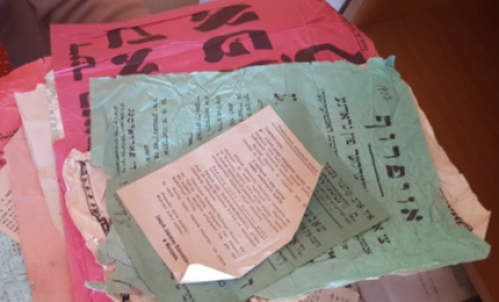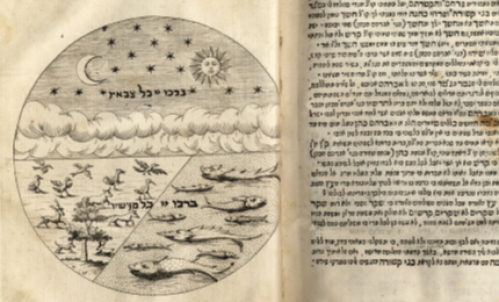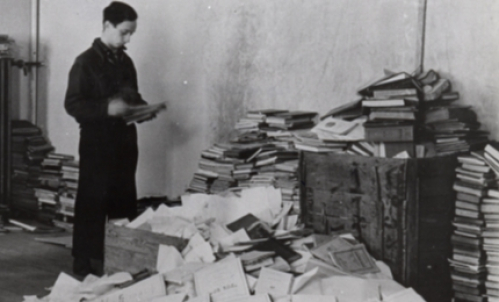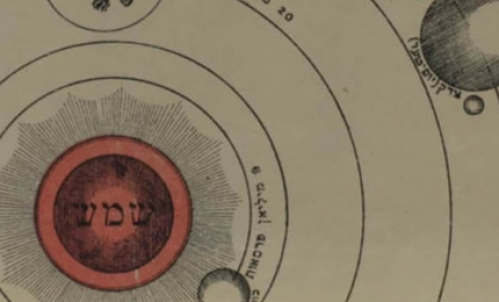A Children’s Orchestra Performs in Vilna
by ROBERTA NEWMAN
The Hevrah Mefitsei Haskalah Society (Society for the Promotion of Culture Among the Jews of Russia) was founded in St. Petersburg in 1863 with the goal of disseminating Russian language and culture among Jews in order to encourage assimilation and to remove the cultural and religious barriers between Jews and Russians. Its founders and financial supporters, which included wealthy Jews such as the Barons Gunzburg and Leon Rosenthal, believed that this would hasten the granting of civic equality to Jews. In practice, this meant a focus on teaching Russian language and culture, promoting secular education, and publishing books and periodicals in Russian (and Hebrew, which was viewed as the ancient and noble language of educated Jews). There were eventually also branches of the organization in Moscow, Riga, Kiev, Grodno, Vilna, and other cities.
The Vilna branch of OPE (an acronym of the Hevrah Mefitsei Haskalah’s Russian name) was formally established in 1909. It focused most of its energies on trying to develop Jewish schools and pedagogical programs for Jewish teachers. But it found its way blocked at every turn by hostile Russian authorities.
It was only during the German occupation of Vilna in World War I that OPE began to make some headway in its goals. The occupying authorities permitted OPE to open its first school in the city, the Public School (Folks-shul) for Boys.
This program for a benefit concert by the school’s orchestra in Vilna’s Bernardine Gardens for the school also dates from the time of the German occupation. Its line-up of classical musical selections provides a taste of the kind of high culture that OPE wanted to inculcate in Jewish children. (The document also bears the stamp of G.K. Rafes, a prominent Vilna wine merchant.)
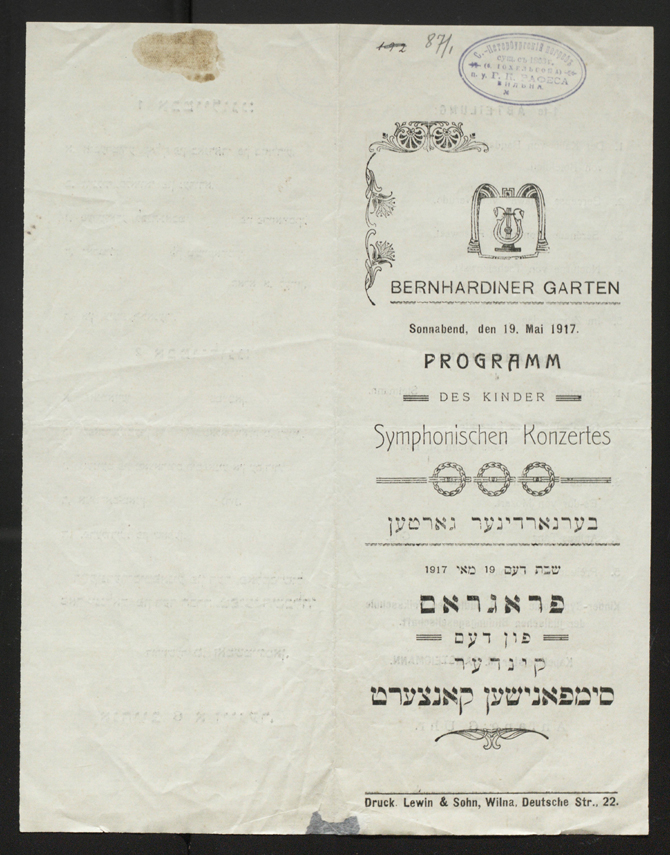
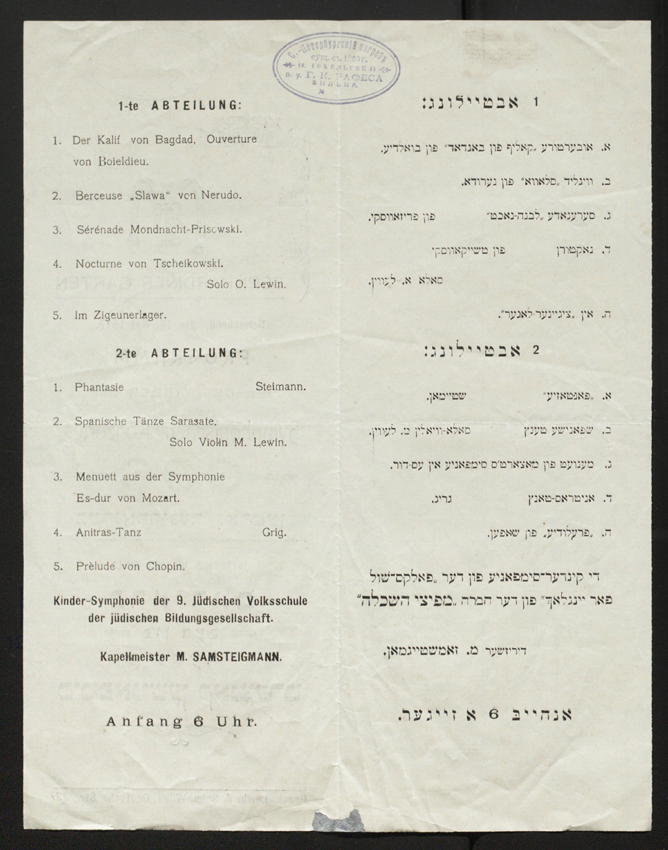
Records of Hevrah Mefitsei Haskalah Society (RG 22) is one of the over 60 archival collections now being digitized for the Vilna Collections Project. Like several other collections, the predominant language of its materials is Russian. Though Yiddish was the everyday language of Jews for most of their history in Eastern Europe, Jews lived in and participated in multilingual environments. Hebrew, Polish, and German (as well as Yiddish) are among the other languages represented in Vilna Collections.
Roberta Newman is YIVO’s Director of Digital Initiatives.
